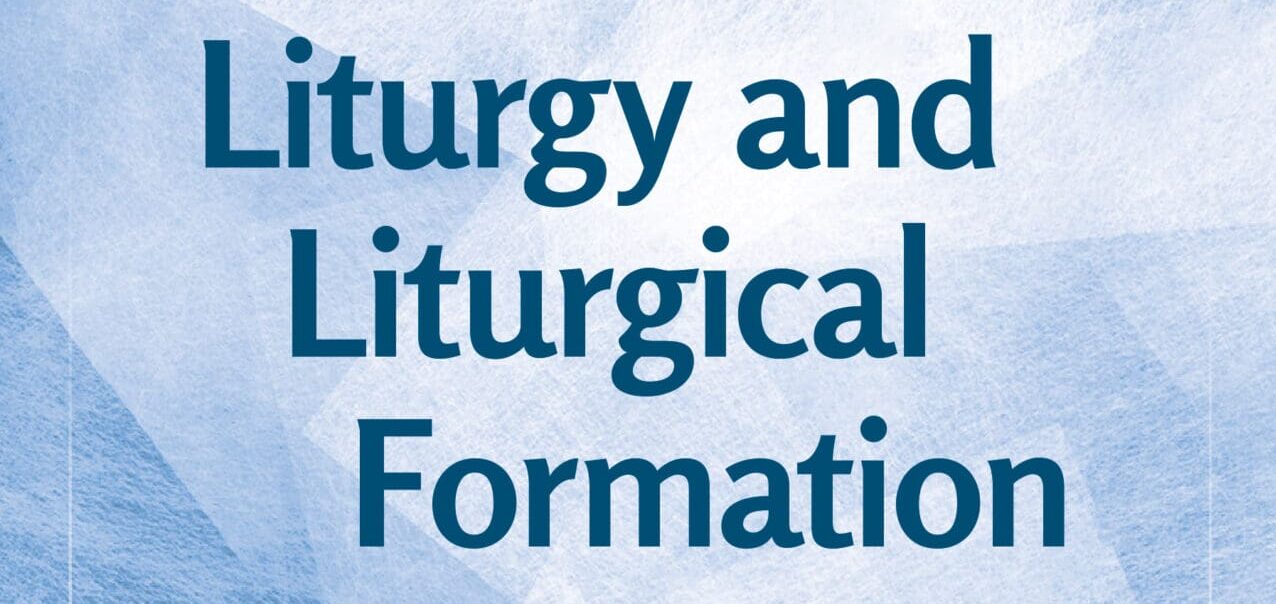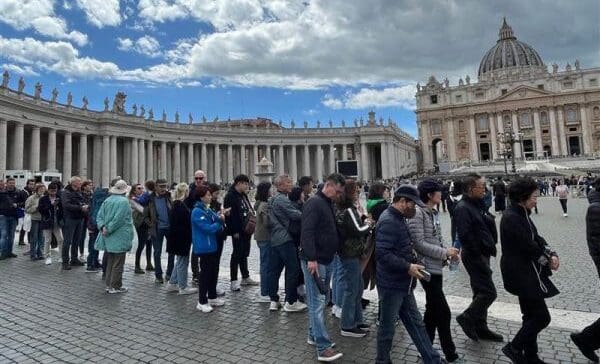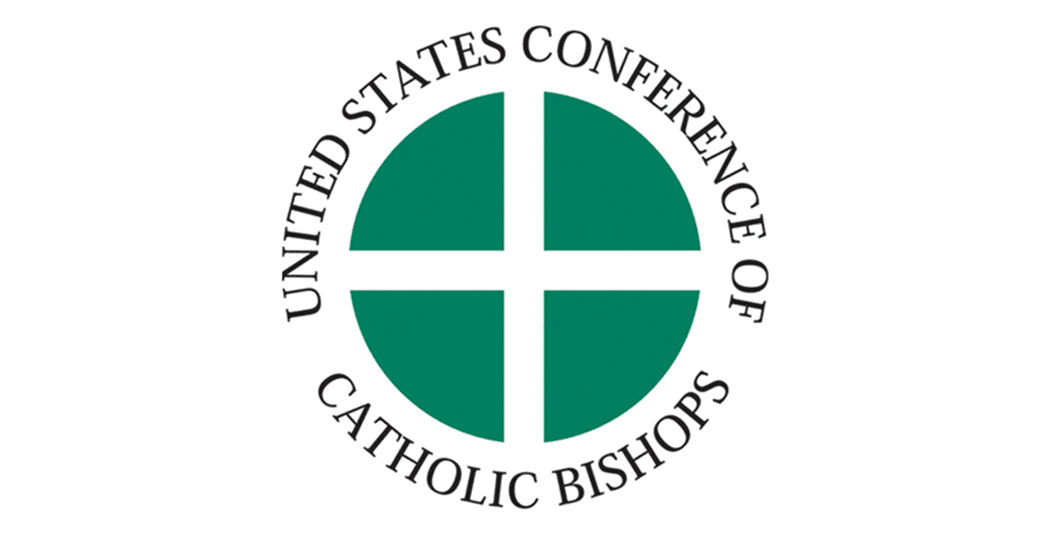
Liturgy does not deal with knowledge, but with reality. There is knowledge of the liturgical action, which precedes it and could be called liturgical knowledge [Liturgik in the original German].1 And there is knowledge within it; the liturgical event allows an insight into itself. To speak about this today is not easy because it has escaped our religious consciousness at large. The liturgy itself is not merely knowledge but a full reality, which embraces much more than knowledge alone: a doing, an order, and the being of itself.
Thus, when we ask ourselves which tasks are assigned to the liturgy, we are not dealing with a scientific endeavor, which would be liturgy (Liturgik). We are not dealing with spiritual counseling and magisterium, but mainly with formation, the word taken in its essential meaning. In this way, it wants to lead the individual in his entirety to the religious-cultic behavior, which makes up the essence of the liturgical life.

This task does not impose itself. Liturgy is not a hobby of an elect group of kindred spirits, but it is the center core of the unbroken Catholic ecclesiastical life itself, neither artificially made by the liturgical movement nor simply sprung forth from the awakening will of the fully Catholic-Christian way of life. This fact is unquestionable. Rather, we are dealing with how a truly liturgical life was able to develop. Not just in places where it could flourish due to favorable circumstances, with people who had a special disposition for it, or in the spiritual environment of a Benedictine abbey, but in the everyday life of a parish community. Yet exactly here lies a danger. Whosoever lives the liturgy will be happy about an attempt to unlock its treasures. However, faced with some texts on the liturgy, one will have to admit that only what comes out of its core and essence can truly serve the liturgy in the end.
If richer knowledge about liturgical things is to be taught and joy awakened regarding liturgical actions, and if liturgical concepts are to become religious exercises even to those who had been strangers to them previously, the result will be a partial success, even if there will always be room for improvement. The central question remains: What is the essence of a liturgical attitude?2 What would be required of man and the community to be rooted in the liturgy? Which forces and sensitivities need to be activated—even, yes, the core of every person—[that is, his or her being]? We are dealing with a very special skill, a becoming, and a growing; indeed, we are dealing with a kind of being. That means we are dealing with a problem of “formation” in the truest sense of the word.
The forces that presuppose such a skill, the sensitivities from which these forces arise, the whole being that carries these sensitivities—these all have withered since the beginning of modernity. Certainly, one will bring up the objection that this kind of approach ties liturgical action to a specific time and cultural-psychological predispositions. Such an approach is not permitted when dealing with Catholic religious practices—that is, practices true for all times and all levels of culture.
Now it is true that the liturgical life does in a certain way transcend these predispositions. Everyone can participate in the Eucharist and receive the sacraments, including he who is subjectivistic and individualistic. Moreover, recent centuries have brought to light forces which unfolded have promoted the wellbeing of the liturgical life, such as a greater sensibility of the soul, a stronger consciousness of personal subsistence, and the dignity and responsibility, etc., of each. We can find a deeper understanding of the essence, form, and spirit of the liturgy and no one will doubt that this rests on a “formation” which since the Middle Ages has slowly waned into disappearance. What remains in question is: Is this kind of formation tied to a specific time such that it will vanish once the frame of that time has vanished definitively? Or are we dealing with the universal human potentiality of the human essence and powers that always reawaken as soon as the conditions for their awakening are given anew? It is this latter conviction upon which this text rests.
Delving deeper it becomes even clearer: those things that make the future, what we sense in the coming of a future age, are to a certain degree forces of this kind. They seek life at the surface; they seek to regain long lost attitudes and to unfold withered sensitivities. A new striving for formation ferments interiorly in a renewed movement toward life and the revived will for one’s own formation. Deficient in proper sensitivities, forces, and attitudes, our Catholic life languished, thin and rationalistic; yet now, these very elements are reawakening. We certainly do not want to return to the Middle Ages; we want our own present and future. Yet we yearn for those forces by which the Middle Ages were so mighty in imagery; we long for them to awaken again in our time and for the boon of our contemporaries. Despite the destruction of the past, we can trust that there is truly something coming to life anew.
Among those powers we have mentioned are those that need to be alive in order to render liturgical life real. By a movement of inner necessity, our time is ripe for the liturgy. Moreover, among the final challenges we face is to discern whether this new life that is surfacing can be elevated into liturgy and so participate in the formation of “all under one head, Christ” (Eph 4:15). Or will liturgical formation remain merely a formation of culture, a certain power of expression of man, man’s being in the world, and his natural feelings of devotion? Therefore, the liturgical problem, seen in the right context, will be one of the most pressing spiritual and cultural issues of the future.
Each chapter of this book contemplates the liturgical life under one specific aspect. Together they ask: What becomes of liturgical method? Is enough importance given to it in our time; and if not, then why not? Which forces lack in man to renew the liturgy, and will these forces reawaken?3 The concrete tasks of formation in the liturgy will emerge in all clarity out of these explanations.
Considering all of this, we need to focus on the essentials. We can only deal with what needs to be done in individual cases to the extent that we may emphasize certain basic and fundamental thoughts. How either the child or the mature person can be led to liturgical action, or even how this can be done with a community, is an inquiry that will need to be left for others to explain. The path only reveals itself once one endeavors to treat it. But to show that we are not just playing around with thoughts, our passages will be completed with some practical advice. This does not mean that there is a prefigured method, but these are supposed to help to initiate the process of resolution.
Romano Guardini (1885-1968) was ordained priest in 1910. He served in Mainz, Germany, and dedicated much of his life to working with the young. He received his doctorate in theology in 1915, writing on the theology of St. Bonaventure, and taught for most of his career at the University of Berlin as Professor of Catholic Philosophy. His noteworthy books include Sacred Signs (1917), The Spirit of the Liturgy (1918), Liturgical Formation (1923), The Lord (1937), and The End of the Modern World (1956).
Footnotes
- There is no proper translation for “Liturgik” in English that is distinct enough to make this logical. In German it is Liturgie (that which is liturgically enacted) and Liturgik (that which deals with all things liturgical) (Translator’s note).
- See Romano Guardini, Meditations before Mass, part 1.
- It is natural that the youth movement together with its impulses, forces, and goals be mentioned frequently in these considerations. In a broad sense, it implies the emergence of a certain image of humanity, which embodies the turning point for a new future (Guardini’s note).


